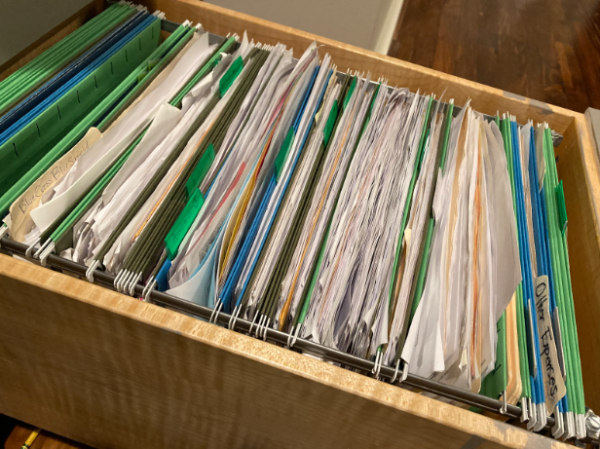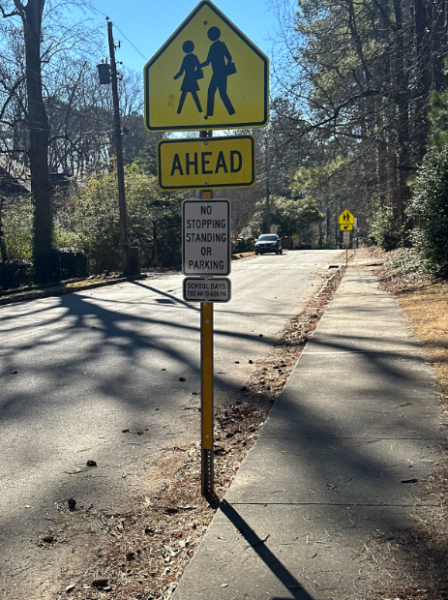Fixing DeKalb’s Finances: An Uphill Battle
In the current state of the global economy, the last thing anyone needs is internal forces putting their financial standing at risk. Unfortunately, that is exactly what happened to the DeKalb County School District. Moody’s Investors Service, one of the country’s main credit rating issuers, withdrew its rating for DCSD.
To most high school students, this sounds like a lot of financial jargon. The first step to comprehending the new obstacles for DeKalb is understanding the terminology behind all of this.
First, you have to know what a bond is. You may have heard about these in your history classes, as the U.S. government issued “Liberty Bonds” to 85 million Americans during World War II. Think of a bond as a reverse loan. The issuer of the bond (DCSD, in this case) is advertising the opportunity to lend them [the district] money and profit through interest. Instead of asking a bank for a loan, large entities, such as corporations and local governments, let investors come to them to loan them money. However, these investors want to ensure that they will get all their money back, in addition to the interest that makes it a profitable venture in the first place. Thus, the credit rating was created.
To fully understand how a credit rating works, as well as what will happen to the district without one, we asked Bart Hildreth, Ph.D., a professor of public management and policy at Georgia State University’s Andrew Young School of Policy Studies, to elaborate on the situation.
“A credit rating is a signal to current and potential investors in DeKalb County School District’s bonds about the probability of the district paying back its debt in full and on time,” said Hildreth. “The loss of the credit rating will have little impact on current operations in the short term assuming it has not issued debt since then. The credit rating does impact the borrower’s cost of capital (the interest they have to pay [the lender] to get cash from others), so when, or if, the district seeks to borrow money by issuing debt instruments (bonds), there will be a penalty cost. Perhaps the district recently issued debt since the loss of credit rating, in which case it has already had an impact.”
Taking all of this into account, it seems as though everything should be fine if DeKalb County just refrains from issuing any bonds. But what if there were a major project in need of financing? Say, the $265 million that DCSD has said that it needs to cover extra construction costs. That could make things slightly more difficult. DCSD could still issue bonds, but it would come with the “penalty cost” that Hildreth mentioned.
“The district can borrow with low or no credit ratings,” said Hildreth. “The cost of capital increases as the credit rating declines from the top [level] ‘Aaa’ (which the State of Georgia has, as do many others) to below what Dekalb had.”
In addition to scaring off some potential investors, losing one credit rating further limits the market for issuing their bonds due to stipulations in some entities’ bond holding policies, according to Todd Barnes, a Managing Director of the Georgia Education Finance division of multinational investment banking company Raymond James. Within this wing, he has worked with many Georgia school districts on their bond policies.
Barnes suggested that some institutional investors, such as banks and insurance companies, have policies that dictate what they can invest in. Some policies say that they can only invest in policies that have multiple ratings. Although DCSD still has a credit rating from Standard and Poor’s, these policies, coupled with difficulty in the bond market due to the ongoing global financial crisis of the past few weeks, will severely limit the number of possible investors in DCSD.
Recognizing these difficulties, the district may turn to taxpayers to secure funding through either another Education Special Purpose Local Option Sales Tax(E-SPLOST) or General Obligation(GO) bonds. If it plans to use the latter option, it seems as though the DCSD’s best course of action is to sit on its hands and not issue any more debt until the credit rating is restored. But what does the district need to do to get that done?
Moody’s initially withdrew its rating due to the district’s failure to turn over audited documents from July 2017 to June 2018. Basically, all that DCSD needs to do is complete the audit and turn over the documents. According to Barnes, this isn’t uncommon and it isn’t very difficult to fix.
“We’ve seen it happen before over the past several years,” said Barnes, “Most districts rely on state department audits and the state has been behind on some. Some small school districts in south Georgia are even two years behind. What we typically see is this: The audit gets completed and that gets sent to Moody’s. Then, after a few weeks of review, provided nothing extreme happened, they reestablish the credit rating. It happens pretty quickly, normally within a couple of months.”
DCSD’s focus is on completing the audit. It sent the unaudited documents to the State Department of Audits in February and the process is expected to take around three months.
“Generally, these are temporary setbacks,” said Barnes.
Temporary setbacks, yes, but many citizens want permanent solutions. At the February Board of Education meeting, Board Chair Marshall Orson proposed modifications to the audit committee that would make it similar to others around metro Atlanta. In the meeting, Orson brought up the inefficiency of the audit committee in its current form.
“[The] audit committee is a [means to carry out our] statutory responsibility..[which is to maintain] financial responsibility [for the District],” said Orson, defending his proposal. “We have not had an audit committee meeting in [over] 7 years. The structure has clearly not worked.”
The current policy is rooted in DCSD’s time under oversight from SACS(Southern Association of Colleges and Schools), which occurred when it almost lost its accreditation from them a few years ago.
“The current policy has every board member as part of the audit committee,” said Orson. “That is not common practice for most school systems, most have a smaller subset. The reason why we have that as the policy is that we wrote it when we were on probation with SACS. They don’t like boards having committees, so we compromised by having the ‘committee as a whole’[where the entire Board acts as the committee].”
According to Orson, this format has been a stumbling block for years.
“The problem is, it’s not a really practical solution, because you don’t really have everyone equally engaging in those committees,” said Orson. “What we realized over time is that it’s hard to get momentum to get the audit committee running on a sustained basis. As we looked around at other school districts, what we saw is that most were using a smaller subset, which was more efficient and more focused on the subject matter.”
Before he became Chair, Orson served as the Vice Chair for multiple years. He recognizes that he is partially at fault, but cites this experience as proof that the committee needs reform.
“As a former Vice Chair, that is partly my fault as being responsible for the audit committee,” said Orson. “… I saw an inherent flaw in the design of the audit committee. I take my share of the blame. We are cleaning it up. We need an effective audit committee and process.”
The original proposal would create a smaller committee, composed of only three Board members. Two would be appointed by the Chair of the Board, while one would be appointed by the Vice Chair. Additionally, the Director of Internal Audits, Superintendent, CFO, and Chief Human Resources Officer would participate in its meetings. It is still being edited to make it satisfy the wants of all members, but in Orson’s opinion, this compromise is worth the long-term benefits.
“I am tweaking the policy further, as some wanted the vice chair to continue to be the chair,” said Orson. “Our goal is to have a functioning audit committee in order to exercise our financial oversight of the district.”
Overall, he believes that this has the potential to give DCSD advanced warning of an issue like the one we are in now.
“With the audit committee, the expectation would be that they are monitoring the situation and reporting to the full board when a problem like this is looming,” said Orson.
I would like to thank Mr. Barnes and Dr. Hildreth for taking the time to explain the functions of municipal bonds and credit ratings to a (mostly) financially illiterate teenager. They were integral in making this article possible and we are forever indebted to them.
Your donation will support the student journalists of Chamblee High School Blue & Gold. Your contribution will allow us to print editions of our work and cover our annual website hosting costs. Currently, we are working to fund a Halloween satire edition.

James Hardy is a senior and editor of the Blue & Gold. In his free time, you can find him memorizing baseball stats, exploring local parks, or driving aimlessly instead of finishing his college applications. In five years, he hopes to have finally read the stack of books sitting on his desk. This is his second year on staff.








